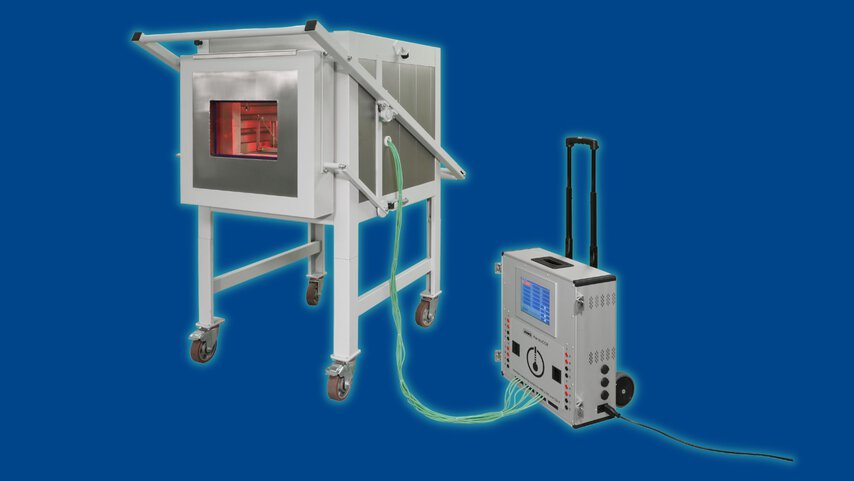

CQI 9 – special process heat treat system assessment and calibration
All important properties of metals, such as hardness or ductility, are only achieved through targeted and sophisticated heat treatment processes. In order to guarantee these properties, automotive manufacturers have jointly developed appropriate regulations for their suppliers and service providers. From the article, you will learn what the CQI guidelines relate to, what changes have been introduced by the latest edition of the standard and learn about the system for measuring and managing heat treatment processes according to the AIAG JUMO thermoCOR standard. Check it out!
Continuous quality improvement (CQI) guidelines – what do they contain?
The CQI-9 (Heat Treat System Assessment) guidelines regulate issues related to heat treatment processes. They are divided into different sections that describe, for example, the process of evaluating heat treatment systems, the required instrumentation, as well as SAT (System Accuracy Test) and TUS (Temperature Uniformity Survey) tests.
The CQI-9 guidelines include such heat treatment process issues as:
-
responsibilities of personnel and auditors
-
quality planning
-
storage, transport and keeping of products
-
tool management
-
specific equipment requirements
-
frequency of calibration and certification of process equipment transport
CQI-9 guidelines – application
The CQI-9 guidelines are an absolute standard in the automotive and aerospace industries. They are applicable to all organisations using heat treatment processes.

CQI-9 guidelines apply to heat treatment processes in the automotive industry and heat treat industry
CQI-9 4th edition – changes
When the fourth edition of CQI-9 was published in June 2020, a number of additions were made. One of the biggest changes in the new version is that third-party service providers must now be accredited according to a national standard in order to perform instructional testing and SAT measurements. JUMO meets these requirements and is the ideal calibration partner for all heat treatment processes in accordance with CQI-9.
Furnace temperature distribution measurement and calibration of furnaces with the JUMO thermoCOR measuring system
SAT and TUS tests – purpose of application
For thermal processes, furnace temperature distribution measurement (TUS) and system measurement consistency tests (SAT) are crucial. These tests identify hot and cold spots in the furnace and ensure the repeatability of the production process. They also make it possible to meet binding customer requirements and thus reduce the number of complaints.
Self-calibration device
Responding to these needs, we offer an easy-to-use and compact solution for calibration in accordance with CQI-9 – the thermoCOR self-calibration device. Interested parties can purchase the JUMO thermoCOR in its entirety and perform all the tests themselves or have JUMO perform the tests. In this case, the service department performs all tasks for the customer up to and including the preparation of the test protocols. In addition, JUMO also schedules all necessary recalibrations so that you do not forget any deadlines.
Calibration certificate
As part of the DAkkS calibration, the temperature probe is checked at different temperatures. Based on the measurement data, the characteristic parameters are calculated and a calibration certificate is issued. We issue DAkkS calibration certificates for RTD temperature probes, thermocouples, measuring chains of measuring chains, data loggers and temperature block calibrators in the measuring range from -80 to +1100 °C.

JUMO thermoCOR is a portable measuring system for SAT and TUS tests in accordance with CQI-9 requirement that can be use by heat treat suppliers.
On-site calibration of the temperature probe as a reliable means of assessment
The calibration of the temperature probe alone is not sufficient in many cases, as the measurement result is influenced by other components related to temperature acquisition. These components include:
-
transmitter cables to the temperature sensor
-
measuring point switch
-
controllers, recorders or indicators.
-
Only an on-site calibration can correctly assess all factors and include them in the calibration result.
Contact us – we also carry out on-site calibration in our testing and calibration laboratories!
Which of our devices meet the AMS 2750 aviation and CQI-9 automotive standards?
The devices in our range that meet the standards AMS 2750 and CQI-9 are:
- MTRON T PLC
- variTRON 300 PLC controller
- VariTRON 500 PLC controller
- LogosCREEN 601 screen recorder
- LogosCREEN 700 screen recorder
- DiconTOUCH process controller
- PID regulator dTRON
- Plug-in thermocouple with bayonet connection
- Plug-in thermocouple with type A head
- Plug-in thermocouple with type B head to DIN EN 50447
- Screw-in thermocouple with type J head
- JUMO meroTRON PLC-enabled single/double channel controller
- JUMO screw-in thermocouple with compensation cable
- ${title}${badge}

